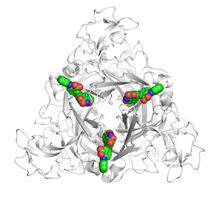New fat graft procedure promises long-term results in breast reconstruction
Advertisement
A team of researchers has discovered a way to boost the survival time of fat grafts in breast reconstruction, overcoming a major problem in a minimally invasive procedure that in many ways seems an ideal alternative to painful reconstructive surgery.
“Consequently, this will lead to improved long-term cosmetic results for these patients,” said Dr. Pietro Gentile, a reconstructive surgeon at the University of Tor Vergata in Rome and lead author of the study, which is published in STEM CELLS Translational Medicine.
Last year more than 96,000 women in the United States underwent breast reconstruction, according to the American Society of Plastic Surgeons. But breast surgery can be painful and does not always lead to good results. So a procedure involving minimally invasive autologous fat grafting could be an ideal alternative, many agree.
In autologous fat grafting, stem cells are separated from the patient’s own fat tissue and then mixed back with the graft to help enhance its healing ability. Since the cells are taken directly from the patient there is no chance of rejection, and the technique is done through injections so produces few complications.
“The immediate gratification and the absence of breast implants have become powerful motivators which have enticed patients to request this regenerative surgery,” noted Dr. Pietro Gentile. “But that does not mean that fat grafts are trouble-free.”
One of the current problems with fat grafts involves their longevity. Over time, the fat can form hard lumps, known as fat necrosis, and turn into scar tissue.
“Another problem is that the body can absorb a portion of the fat and eventually cause the treated breast to lose some of the volume and natural contour realized from the grafting procedure,” Dr. Gentile added. However, if scientists could discover a way to improve the grafts’ survival time these problems could be overcome, too.
So Dr. Gentile and his colleague Dr. Augusto Orlandi, also of the University of Tor Vergata, led a team in testing whether treating fat grafts with either enhanced stromal vascular fraction (SVF) or platelet rich plasma (PRP) would improve the results. SVF cells are a mixed population of cells found in fat tissue consisting of adult stem cells, endothelial progenitor cells, leukocytes, endothelial cells and vascular smooth muscle cells. PRP is blood plasma enriched with platelets containing several different growth factors and special proteins that stimulate healing.
The test group comprised 23 patients, aged 19 to 60 years, suffering from a soft tissue defect in the breast. In the procedure, fat cells were harvested from the patient’s abdomen by liposuction and then the cells were processed in the lab and enhanced with either SVF or PRP. The cells were then injected into the patient’s breast, with the specific graft area determined by where the breast needed correction.
“The results were impressive,” said Dr. Valerio Cervelli, a reconstructive surgeon and member of the study team. “Patients whose breasts were reconstructed using the SVF-enhanced fat grafts maintained 63 percent of the restored contour and volume a year after surgery, while those who were treated with fat grafting and PRP experienced a 69 percent maintenance rate.”
Dr. Gentile added, “This compares to the control group of patients, who were treated with unenhanced fat graft, where a year later the restored contour and volume maintenance rate was only 39 percent. Along with these statistics that support the improved maintenance results, nearly all the patients reported that they were satisfied with their cosmetic appearance, too.”
“These techniques look promising for addressing some of the current challenges with fat grafting,” said Dr. Anthony Atala, Editor of STEM CELLS Translational Medicine and director of the Wake Forest Institute for Regenerative Medicine. “This research has the potential to provide an alternative to traditional reconstructive methods.”


















































